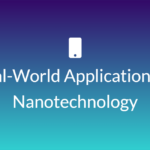Real-World Applications of Nanotechnology
Nanotechnology used in Medicine, Consumer Goods, Sensors, Electronics Nanotechnology has found numerous practical applications in various fields, revolutionizing industries and improving everyday life. One significant area where nanotechnology is making…

